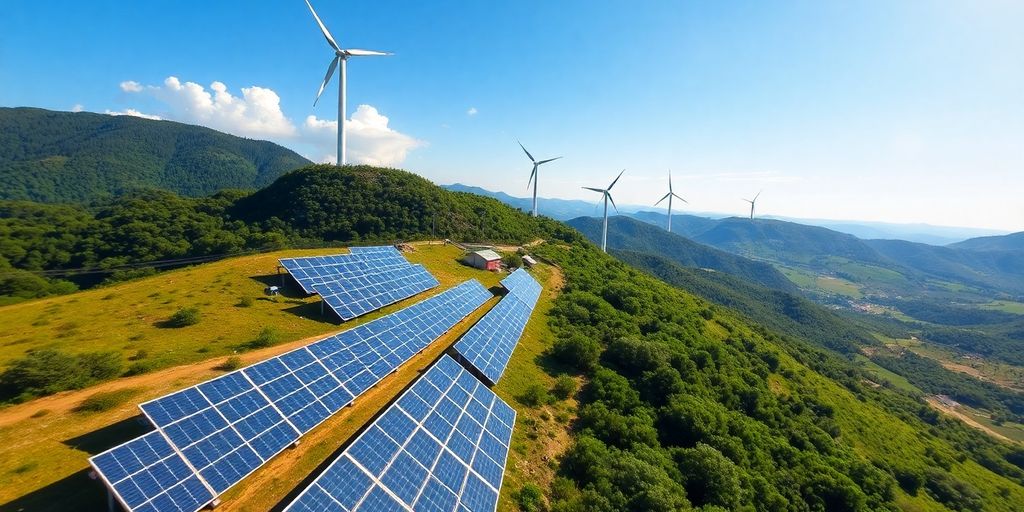The Western Balkans are poised for a significant transformation in their energy landscape, with projections indicating a 20 GW increase in installed power capacity by 2040. This growth is largely driven by renewable energy sources, which are expected to account for nearly 65% of the new capacity.
Key Takeaways
- Projected Growth: 20 GW increase in power capacity by 2040.
- Renewable Focus: Nearly 65% of new capacity will come from renewable sources.
- Investment Opportunities: Expected investments in the tens of billions.
- Electricity Prices: Prices may remain above EUR 100 per MWh until 2030.
- Decarbonization Timeline: Full coal phaseout anticipated by 2045.
Overview of Capacity Growth
According to a recent forecast by Aurora Energy Research, the Western Balkans, which includes countries like Albania, Kosovo, North Macedonia, Montenegro, and Bosnia and Herzegovina, are set to experience a substantial increase in energy capacity. The forecast highlights that the region’s installed capacity could grow by as much as 35 GW by 2060, indicating a long-term trend towards energy expansion and modernization.
Renewable Energy Dominance
The report emphasizes that solar power will lead the charge in this growth, showcasing the fastest growth rate and the highest absolute capacity value among renewable sources. The anticipated capacity additions will include:
- Photovoltaics: The primary driver of growth.
- Battery Energy Storage Systems (BESS): Essential for managing energy supply and demand.
- Interconnectors: To enhance regional energy trade and stability.
- Hydrogen-Fired Combined-Cycle Gas Turbines (CCGT): As part of the transition to cleaner energy.
Market Dynamics and Price Projections
The analysis indicates that electricity prices in the Western Balkans are expected to remain volatile, with projections suggesting prices will hover around or above EUR 100 per MWh until 2030. Factors influencing these prices include:
- Short-Term Volatility: Driven by fluctuating commodity prices.
- Long-Term Trends: Expected to stabilize between EUR 70 and EUR 80 per MWh as renewable penetration increases.
Decarbonization and Future Outlook
The pace of decarbonization in the Western Balkans is closely tied to the implementation of the European Union’s Carbon Border Adjustment Mechanism (CBAM) and alignment with the EU Emissions Trading System (EU ETS). The region is expected to phase out coal by 2045, with a significant reduction in its share of the energy mix over the next decade due to regulatory pressures and market dynamics.
Conclusion
The Western Balkans are on the brink of a major energy transition, with a clear focus on renewable energy and sustainability. As investor interest grows, the region is becoming an attractive destination for energy development, promising substantial economic opportunities and a cleaner energy future. The insights provided by Aurora Energy Research will be crucial for stakeholders looking to navigate this evolving landscape and capitalize on the forthcoming changes in the energy market.
Sources
- Aurora forecasts power capacity growth in Western Balkans of 20 GW by 2040, Balkan Green Energy News.
- W. Balkans to add 20 GW in energy capacity by 2040 – consultancy, SeeNews.






